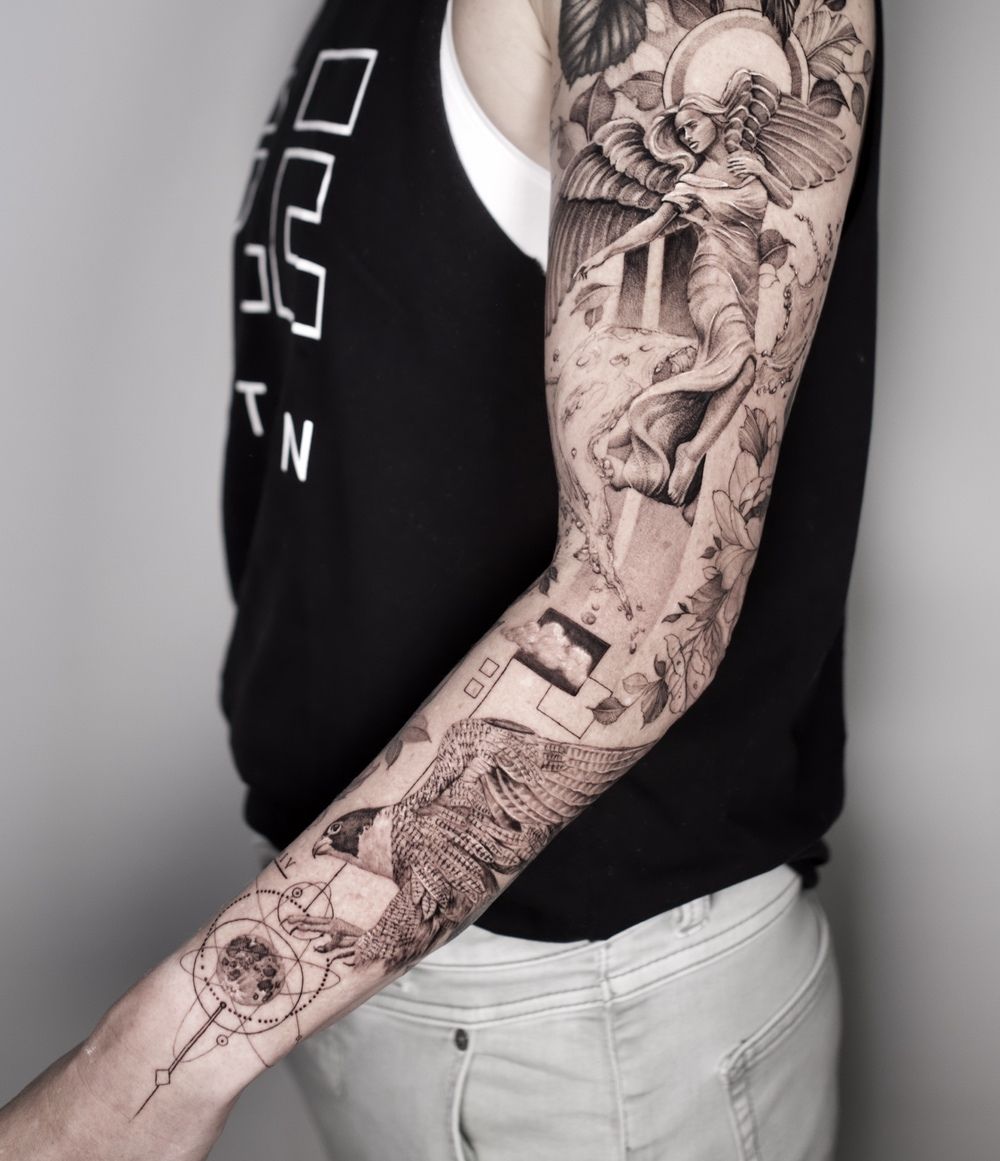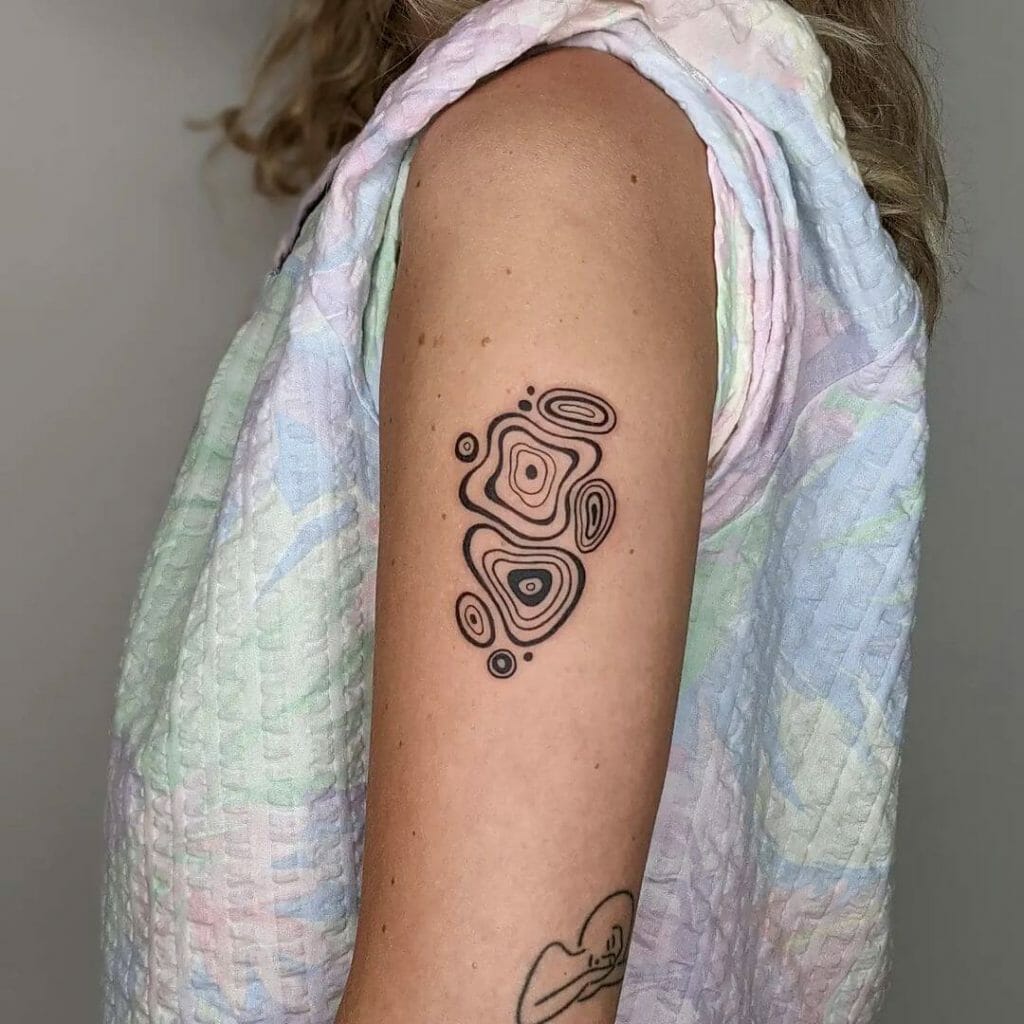
Okay, buckle up, tattoo enthusiasts! Let’s dive deep into the fascinating world of miniature ink and explore the possibility of blending seemingly disparate styles like tribal and realism in a tiny tattoo. It’s a challenge, for sure, but with the right artist and approach, it can be done!
Can Your Teeny Tattoo Truly Be a Style Fusion? A Deep Dive
The short answer? Yes, absolutely! But like any ambitious art project, the devil is in the details. Successfully merging tribal and realism in a small tattoo requires a deft hand, a keen eye for design, and a healthy dose of artistic ingenuity. Let’s break down the components.
1. The Allure of Tiny Tattoos: Why Go Small?
Tiny tattoos have exploded in popularity for a multitude of reasons. They’re discreet, often more affordable, and can be a subtle way to express yourself. Maybe it’s a meaningful symbol tucked behind your ear, a reminder of a loved one on your wrist, or a whimsical design hidden on your ankle. The appeal lies in their understated elegance and personal significance. They are also a great way to test the waters before committing to a larger piece.
2. Tribal Tattoos: Bold Lines, Rich History
Tribal tattoos, rooted in ancient traditions across various cultures, are characterized by bold, geometric patterns, often incorporating thick black lines and intricate designs. They’re not just decoration; they often represent lineage, status, and spiritual beliefs. Think Polynesian patterns, Maori designs, or traditional Native American art. The strength and symbolism inherent in tribal designs make them a powerful choice.
3. Realism Tattoos: Capturing Life in Ink
Realism tattoos, on the other hand, strive to replicate images with astonishing accuracy. They aim to capture the nuances of light, shadow, and texture, creating a lifelike representation of a portrait, landscape, or object. Think stunning portraits, detailed animal depictions, or hyper-realistic renderings of everyday objects. The goal is to create an illusion of reality on the skin.
4. The Challenge: Bridging the Gap Between Two Worlds
The challenge lies in the inherent differences between these two styles. Tribal art often relies on simplification and stylized representations, while realism demands meticulous detail and accuracy. How do you reconcile these opposing philosophies in a tiny space?
5. Size Matters: The Limitations of Miniature Ink
Tiny tattoos, by their very nature, impose limitations. The smaller the canvas, the less room there is for intricate detail. Lines can blur, colors can fade, and the overall design can lose its impact if not executed with precision. This is especially true when attempting to combine complex styles.
6. Choosing the Right Artist: A Crucial First Step
The success of your tribal-realism fusion tattoo hinges on selecting a skilled and experienced artist. Look for someone who specializes in both styles and has a portfolio showcasing their ability to create clean, detailed work in a small format. Don’t be afraid to ask questions about their techniques and approach to this specific challenge.
7. Design Considerations: Simplification is Key
When merging these styles in a tiny tattoo, simplification is paramount. You can’t cram a full-blown tribal design and a hyper-realistic portrait into a space the size of a dime. Instead, focus on key elements from each style and distill them into a cohesive, minimalist design.
8. Line Weight: Balancing Boldness and Finesse
Line weight plays a crucial role in both tribal and realism tattoos. In tribal designs, bold lines define the shapes and patterns. In realism, fine lines create subtle details and shading. Finding the right balance is essential for a successful fusion. Consider using thicker lines for the tribal elements and thinner lines for the realistic details.
9. Color Palette: Harmony or Contrast?
Traditionally, tribal tattoos are often done in black ink, while realism tattoos utilize a wider range of colors to create depth and dimension. When combining the two, you have several options. You can stick to a monochromatic palette for a unified look, or you can introduce pops of color to highlight specific elements.
10. Placement: Where to Showcase Your Fusion Art
The placement of your tiny tattoo can also impact its overall appearance. Areas with less movement, such as the wrist, ankle, or back of the neck, tend to hold detail better. Avoid areas prone to stretching or rubbing, as this can cause the tattoo to fade or blur over time.
11. Examples of Successful Tribal-Realism Fusions
So, what does a successful tribal-realism fusion tattoo look like? Here are a few examples to inspire you:
- A tribal-style animal silhouette with realistic fur texture: Imagine a bear rendered in bold tribal lines, but with subtle shading and fur details to give it a realistic touch.
- A realistic eye surrounded by tribal patterns: A single, captivating eye rendered with realistic detail, framed by geometric tribal designs that accentuate its shape.
- A tribal-inspired flower with realistic petals: A flower with a stylized tribal design, but with realistic shading and texture on the petals to create depth and dimension.
12. The Importance of Collaboration: Working with Your Artist
Communication is key to achieving your desired outcome. Work closely with your artist to develop a design that meets your vision and is technically feasible. Be open to their suggestions and expertise, and don’t be afraid to make adjustments along the way.
13. Aftercare: Protecting Your Investment
Proper aftercare is essential for any tattoo, but it’s especially important for tiny tattoos with intricate details. Follow your artist’s instructions carefully, and keep the area clean and moisturized. Avoid exposing the tattoo to direct sunlight, and be patient during the healing process.
14. Potential Pitfalls: What to Avoid
Trying to cram too much detail into a tiny space is a common mistake. Avoid overly complex designs that are likely to blur or fade over time. Also, be wary of artists who promise unrealistic results. If it sounds too good to be true, it probably is.
15. Long-Term Considerations: Touch-Ups and Fading
Tiny tattoos, especially those with intricate details, may require occasional touch-ups to maintain their sharpness and vibrancy. Factors such as sun exposure, skin type, and the quality of the ink can all affect how well a tattoo holds up over time.
Conclusion: A Tiny Canvas, a World of Possibilities
While combining tribal and realism in a tiny tattoo presents unique challenges, it’s certainly achievable with the right approach. By simplifying the design, choosing a skilled artist, and prioritizing proper aftercare, you can create a stunning piece of art that reflects your individual style and tells your unique story. Embrace the fusion, and let your imagination run wild!
FAQs: Your Burning Questions Answered
1. How small is too small for a tribal-realism fusion tattoo?
Generally, anything smaller than an inch can be problematic. The smaller the tattoo, the less detail you can incorporate, and the more likely it is to blur over time. Discuss size limitations with your artist.
2. Will the ink spread over time, blurring the design?
Ink spread is a possibility with any tattoo, but it’s more likely to occur in tiny tattoos with closely spaced lines. Choosing an experienced artist and following proper aftercare can help minimize this risk.
3. Can I incorporate color into a tribal-realism fusion tattoo?
Yes, you can! However, use color sparingly and strategically to avoid overwhelming the design. Consider using a limited color palette or focusing on a single pop of color to highlight a specific element.
4. How much will a tiny tribal-realism fusion tattoo cost?
The cost will vary depending on the artist’s experience, the complexity of the design, and the location of the tattoo. Expect to pay a premium for a skilled artist who specializes in both tribal and realism styles.
5. What if I’m not happy with the final result?
Communication is key throughout the process. If you’re not happy with the design or the execution, speak up! A good artist will be willing to work with you to make adjustments and ensure that you’re satisfied with the final result. If you’re still unhappy, consider laser tattoo removal or a cover-up as a last resort.




